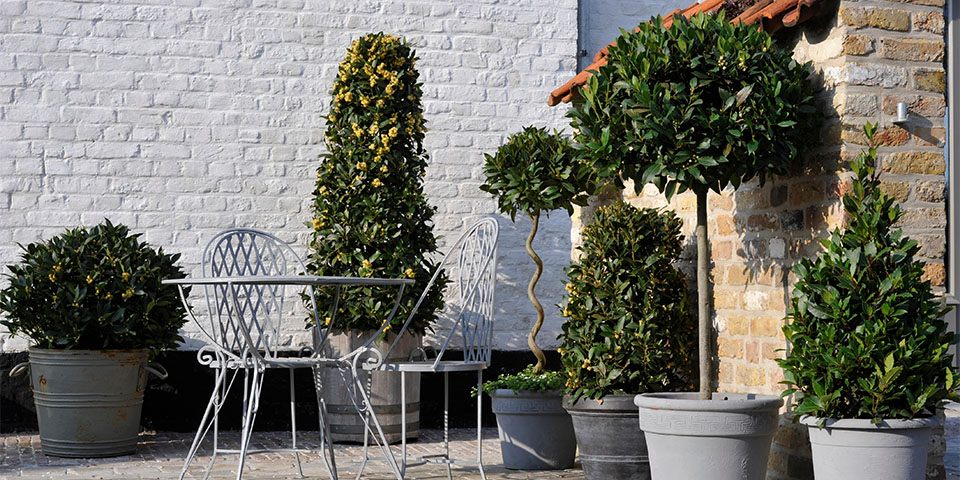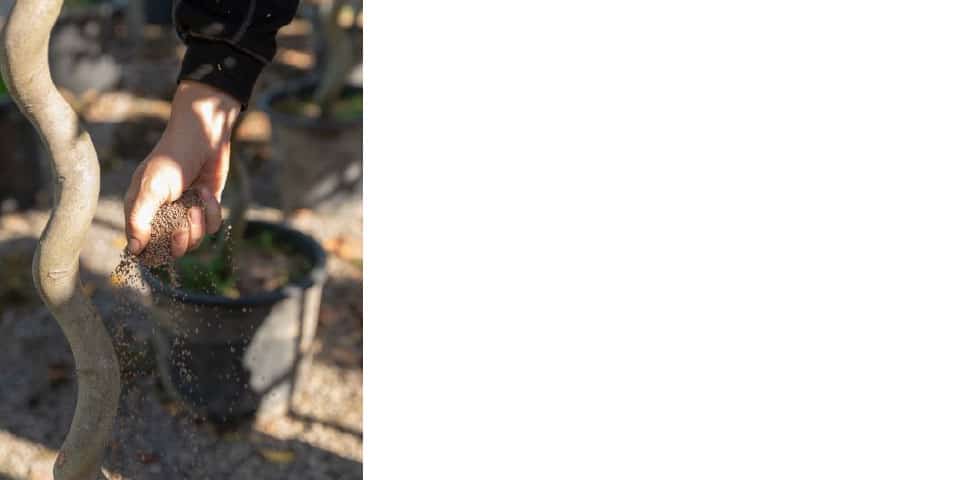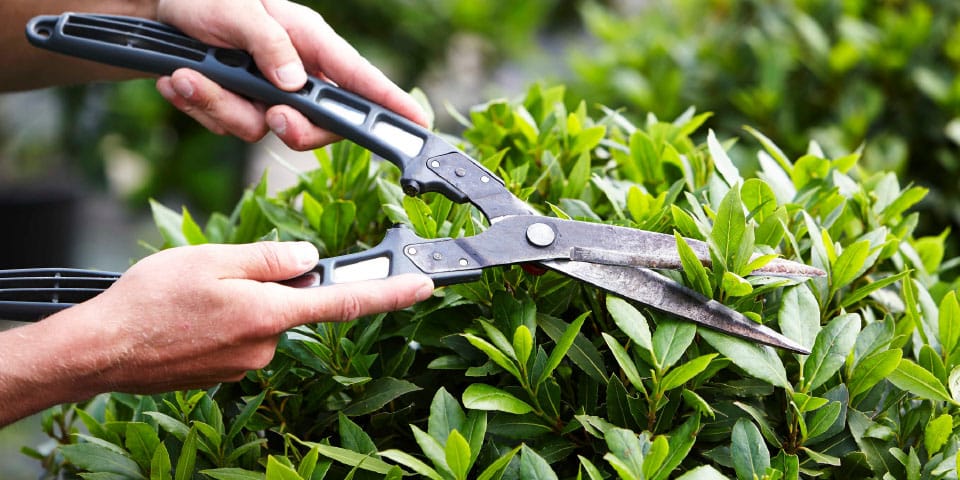
Here's how to keep your laurel beautiful and healthy
Care tips from specialist Marian Maenhoudt
Bay laurel is a beautiful and durable plant. Provided proper care and maintenance, it retains its beauty for years. Laurica-plants/Lauretum from Jabbeke has specialized in growing bay laurel for years. Each plant that leaves the company bears the highly recognizable orange quality label. Marian Maenhoudt gives some care tips for optimal results.

The Laurica orange quality label.
Pruning
Regular pruning ensures full and compact plants. Hand pruning with pruning shears gives the best results. Larger specimens can also be pruned with hedge shears. Pruning is done twice a year, at the beginning of summer and during the winter period.
Summer pruning is intended to keep the shape of the plant beautiful. For slightly older plants (from 4 to 5 years old), it is best to prune the strongest shoots before July. The stronger the shoot, the shorter it may be pruned and the stronger it will grow again afterwards. Judicious pruning leads to a full and compact plant form.
Winter or topiary pruning is best carried out between November and March. Of importance here is balancing the plant and updating the sphere or pyramid shape. It is important to let the plant grow only a few centimeters in diameter each year. A compact shape helps the plant better withstand rain and wind.
Pruning, especially of younger plants, can be done "by eye. With older and larger specimens, it is easier to use a pruningimal or a measuring cord for this purpose.

Fertilize twice a year.
Repot
Laurel may be repotted year-round, but September is the ideal time. From then on, the plant gradually goes into hibernation. However, the root system is still quite active then, allowing the
new soil before winter is still partially rooted through.
For the first few years, it is best to repot a laurel every year. Over time, this may be done every two years. For plants over ten years old, repotting every four to five years is sufficient. Specimens more than fifty years old are satisfied with repotting every ten to fifteen years. The roots should never be pruned when repotting!
For successive transplanting, use an increasingly larger container, perforated at the bottom and possibly coated with argex or lava, for optimum drainage. A pouring edge of two to three inches all around is important to ensure adequate watering at each pour.
can give.
As filling for the pot, it is best to use potting soil for orangery plants, pre-fertilized and mixed with clay. This will optimally retain water as a buffer.

Pruning for form and growth.
Fertilize
A long-acting organic fertilizer with high nitrogen content ensures healthy plants, vigorous growth and beautiful green leaf color. Special fertilizers with appropriate composition are available in the trade.
Fertilize ideally twice a year: a first time in April-May and a second time in July-August. After all, that's when the plant grows the fastest and needs extra nutrition. The amount of fertilizer depends on the size of the pot and the age of the plant.
Watering
Om because potted plants absorb less rainwater than outdoor specimens, regular watering is a necessity. The amount and frequency of watering depends on the size of the pot, the location and the season. Always water from above and avoid excess water in the pot or shell as this can lead to root rot.
From March into full summer, watering may be increased gradually. During the hottest summer days, the plant needs a lot of water. From September onward, watering may be reduced. During winter, when dormant, the pot ball may become drier but certainly not
dry out completely.
Pests and disease control
Despite the best care, a laurel can still fall prey to diseases and pests. Scale or head lice on the underside of the leaves, with the typical black mold (sooty mold) can be controlled with a natural soap-based suds, possibly followed by an insecticide treatment against scale insects.
Laurel leaf flea can be recognized by small white dots on the (curly) leaves. Always remove the affected leaves and use an insecticide against leaf flea if necessary.
Winterizing
Laurel can easily withstand light freezing temperatures (up to -5°C). In case of more severe frost, it is best to let the plants overwinter in an unheated but frost-free garage or orangery. Plants that remain outside, protect them by wrapping the stem and root with breathable material (fleece, burlap, old blanket...). Do not forget to water occasionally during the winter as well. After the period of greatest night frost, the plants may be allowed outside again from March.




